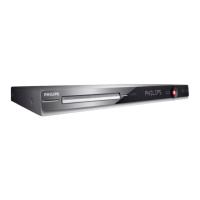
Do you have a question about the Philips DVDR3570H and is the answer not in the manual?
| D/A converter | 10 bit, 54 MHz |
|---|---|
| A/D converter | 10 bit, 54 MHz |
| Picture enhancement | Progressive scan |
| D/A converter | 24 bit, 96 kHz |
|---|---|
| A/D converter | 24 bit, 96 kHz |
| Recording system | PAL |
|---|---|
| Compression formats | MPEG2 |
| Audio compression | Dolby Digital |
| Hard Disk Capacity | 160 GB |
|---|---|
| HDD Media Jukebox Capacity | up to 150 DivX movies, 4.500 songs or 10.000 photos |
| HDD video recording capacity | 180 hr |
| Power supply | 220-240V, 50Hz |
|---|---|
| Power consumption | 28 W |
| Standby power consumption | 3.7 W |
| Weight incl. Packaging | 5.8 kg |
|---|---|
| Packaging dimensions | 571x123x421mm |
| Product dimensions | 435x324x43mm |
Guidance on proper placement and ventilation for the recorder to ensure optimal performance and safety.
Recommendations for handling the HDD to avoid data loss and damage during operation.
Instructions on how to properly clean discs to prevent damage and ensure playback quality.
Overview of the DVD/HDD recorder's capabilities and key features for user convenience.
Explanation of DVD region coding and compatibility restrictions for playback.
Detailed explanation of advanced functions like Pause Live TV, Instant Replay, and FlexTime for enhanced viewing.
Function to turn the unit on or off to normal standby mode.
Accesses the recorder's main Home menu for navigation and content access.
Enters the GUIDE Plus+ TV listings and timer programming menu.
Shows information about the current status of the recorder, such as playback or recording.
Compartment containing various input/output ports for connecting external devices.
Instructions for connecting antenna cables to enable TV watching and recording.
Guidance on connecting video cables using Scart, S-Video, or Composite (CVBS) for viewing playback.
Instructions for connecting audio cables for stereo or digital sound output to external systems.
Preparation steps before initiating the recorder's setup process.
Automatic search process to detect and store available TV channels.
Initiating the setup for the interactive TV program guide service.
Instructions on how to tune into live television broadcasts and use basic playback controls.
Explanation of the TSB feature, allowing live TV pausing and recording to the hard disk.
Information on supported recording media: HDD, DVD±R, DVD±RW, and DVD+R DL.
How to preset recording parameters like quality, mode, and destination in the setup menu.
Step-by-step guide to recording the currently viewed TV program directly to the hard disk.
Explanation of timer recording, its capabilities, and limitations.
How to navigate and access stored content (recordings, videos, music, photos) on the hard disk.
Playing back recorded titles from the HDD, including resume playback and basic controls.
List of supported disc types for recording and playback, including DVD and CD formats.
Instructions for inserting a disc and initiating playback on the recorder.
Renaming recorded titles for better organization and identification.
Tools for editing video content, including inserting/deleting chapter markers and hiding scenes.
Overview of how to navigate the system menu and access various setup options.
Configuring audio, subtitle, and menu languages for playback and interface.
Adjusting settings related to disc playback, including access control, PIN, display, and brightness.
Setting up analogue TV channels via automatic search, Follow TV feature, or manual installation.
Steps to resolve issues where the recorder does not turn on.
Steps to diagnose and fix issues related to no video output or display.
Solutions for discs that cannot be played, including region codes and disc condition.
Explanation of the DivX video compression technology and its capabilities.
Definition of Dolby Digital surround sound systems and their audio channel configurations.
Video display technology offering higher picture resolution and quality by doubling frame rates.
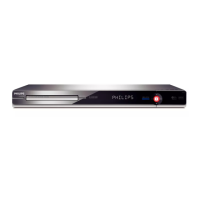
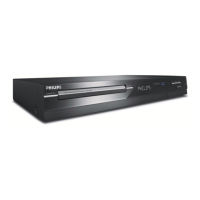
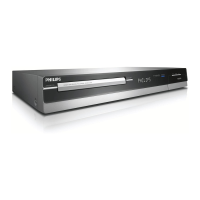
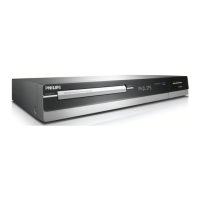
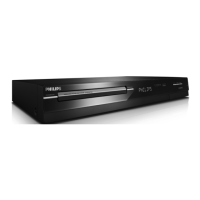
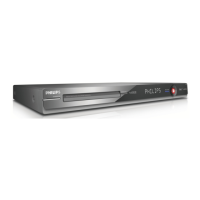
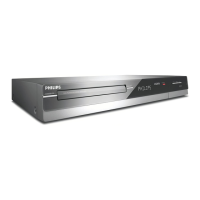
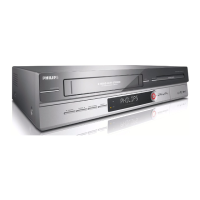

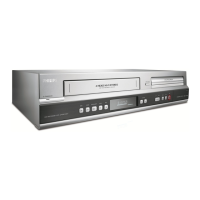


